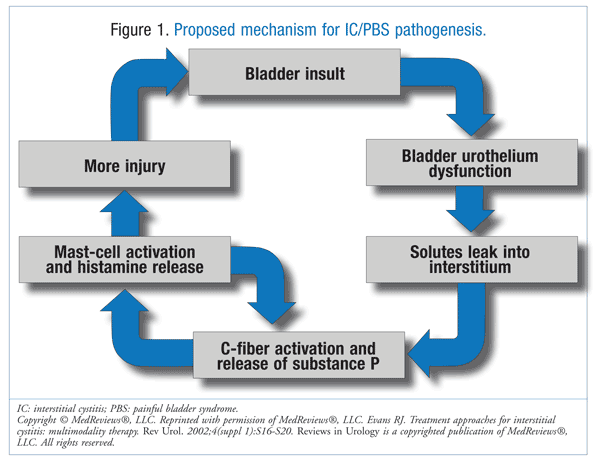
If you have progressed to Stage III, you might have a genetic pre-disposition for painful bladder syndrome. Stage III patients have a bladder capacity that has dropped below 200mL and obvious signs of problems from their cystoscopy. When combined with painful urination or a sensation of constant bladder infection, we sometimes carry out further investigations with magnetic resonance imaging (MRI) or a diagnostic pudendal nerve block. If we find some evidence for painful bladder syndrome – such as a reduced bladder capacity or minor changes of the bladder wall – you might be classified as a stage II patient. These cases are the most common, and we often find other causes for patients’ discomfort. If you have pain when your bladder gets full, but we cannot find an abnormality, we will carry out a thorough search for other problems that may explain your symptoms. You will not necessarily progress steadily from one stage to the next. There are numerous stages of painful bladder syndrome that you might be experiencing. Your treatment will involve not only the bladder itself, but also the nervous system that supplies it, and any mental factors in play. Usually painful bladder syndrome involves all elements of bladder control, from the inner layer of the bladder to the centers in the brain that control urination. Normally there are a range of contributing factors, from abnormality of the mucosa (the inner layer of the bladder) to abnormality in the innervation of the bladder and the urethra. There are some myths surrounding how and why painful bladder syndrome develops.

The condition is more common in women than in men. People with painful bladder syndrome can also have overlap with pudendal nerve pain type symptoms such as pain in the sitting position, sexual dysfunction, and pain with urination.

You might also experience lack of sleep, anxiety and difficulty urinating.

This reduced capacity means you need to empty your bladder more frequently, especially at night. If you have painful bladder syndrome, you cannot tolerate your bladder filling to normal capacity, which for most people is 400-600mL.


 0 kommentar(er)
0 kommentar(er)
